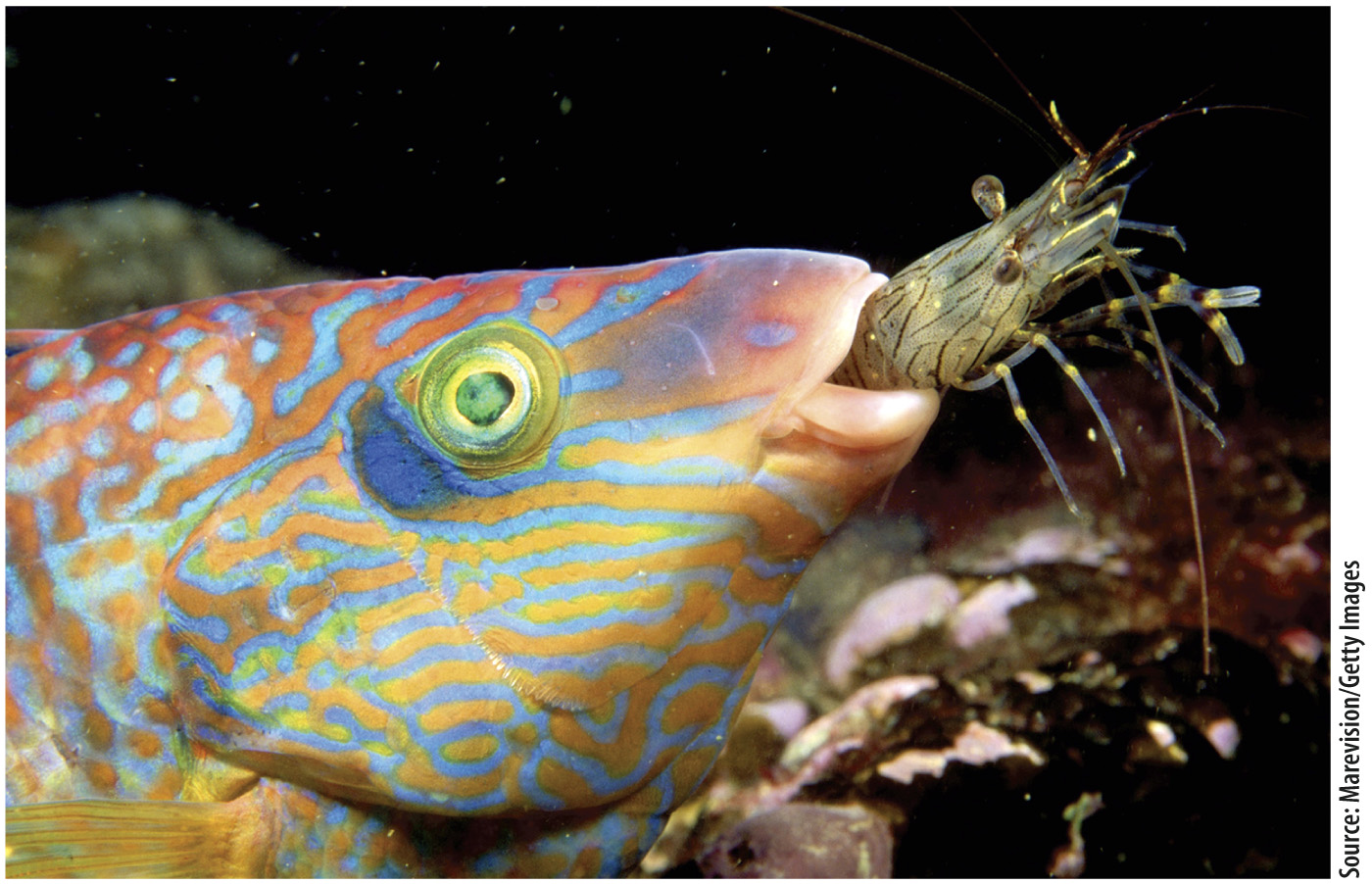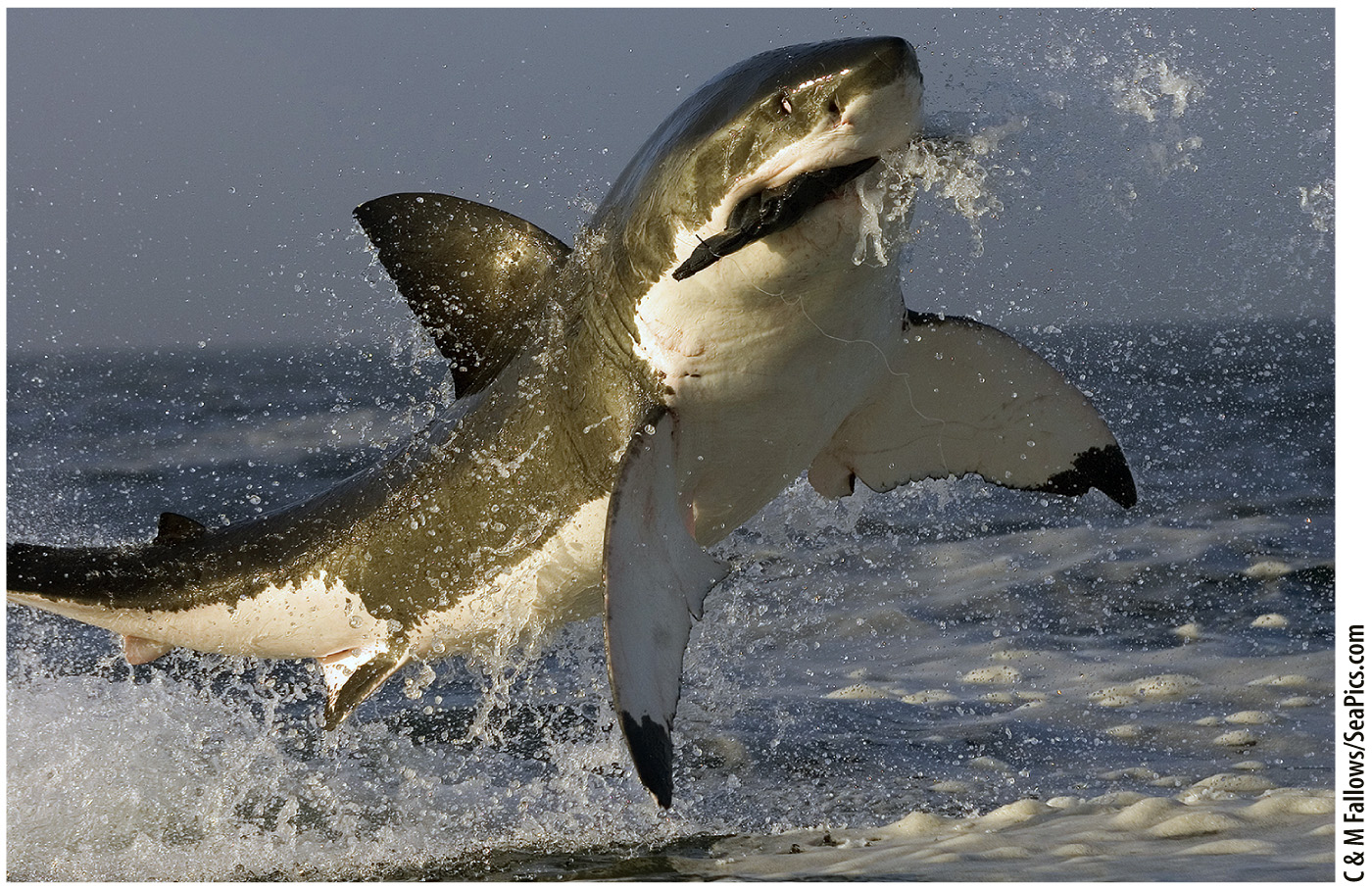Large aquatic animals apprehend prey by suction feeding and active swimming.
862
Aquatic animals that do not rely on suspension filter feeding capture their prey in other ways. Many fish feed by suction. A rapid expansion of the fish’s mouth cavity draws water and the desired prey into the mouth (Fig. 40.8). After the fish closes its mouth, the water is pumped out of the mouth past the gills. The prey is trapped inside the mouth, moves into the pharynx (part of the throat), and is broken up by specialized pharyngeal jaws (a second set of jaws in the throat) before being swallowed. Suction feeding is the most common form of prey capture among fish, as it allows them to be “sit-

Many insects that bite to obtain a blood meal rely on suction to draw the blood of their prey into their digestive system. Young mammals feed by suckling milk from their mother’s breast, using their tongue and also generating suction as fish do.
As top predators in marine and freshwater environments, larger fish and marine mammals like sharks, whales, and dolphins actively swim to capture their prey (Fig. 40.9). Their larger size and speed enables them to catch smaller or similar-
